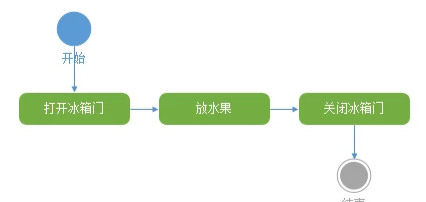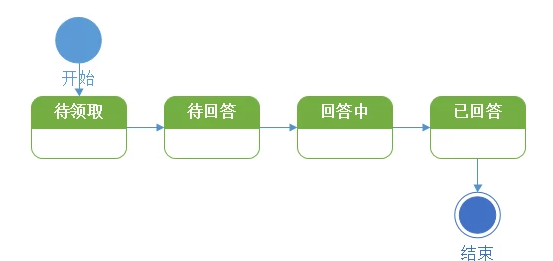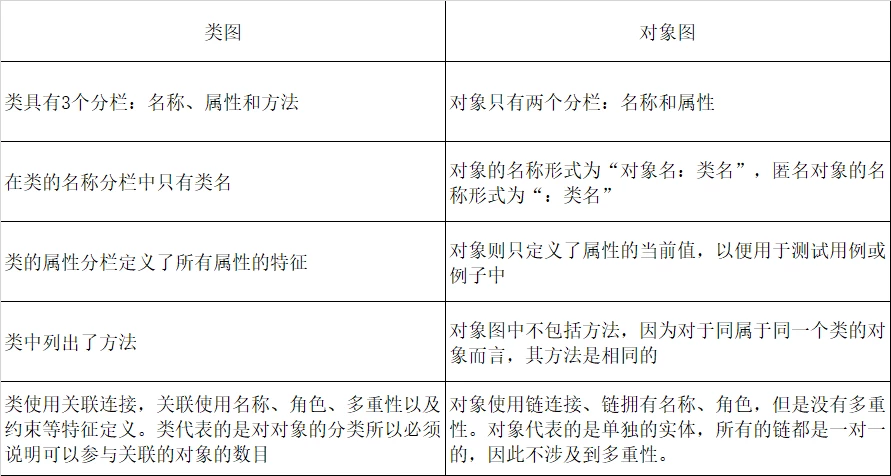A flowchart classification
UML there are many, can be roughly classified into two categories: drawing and structural behavior of the map type. Usually work flow chart, as long as things can clearly show that the form of a flow chart with what, in fact, does not matter.
However, as a product manager, there are a flowchart which species are likely to be encountered on the job or use, you are not supposed to understand it twelve? Maybe someday you'll need to use one of them.
Second, the type of behavior diagram
Description: As the product Kong, the type of behavior we want to focus on understanding the map.
- UML activity diagram
- FIG UML state machines
- FIG UML sequence / timing chart / sequence of FIG.
1. UML activity diagram
One character to get something done through a number of actions process.
For example: the fruit in the fridge

Rectangular with rounded edges activity graph, showing activity in the process, arrowed lines showing the sequence of events between a plurality of activities.
The figure is only a positive performance of the process, learn about a new thing, it is recommended to start from simple, first remove all judgment conditions, take life in common life situations, for example, to achieve mastery.
2. UML State Machine FIG.
A transaction state change process.
Example: answering a question from a proposal to change state

The whole process is to ask about the "problem" of the transactions. Each green box represents a current problem state. Similarly, starting from simple, is not considered complex situations, learn to say.
3. UML sequence diagram / timing chart / Fig sequence
Multiple roles involved, through a number of steps to finalize the process during a job.
For example: a customer at the point of a take-APP

There were three big villains, each representing a villain role. There is a line connection, and indicates how the interaction between role between the characters and roles. Customers point takeaway, involving several roles, several process, if you encounter this situation, consider using UML sequence diagrams.
Benefit is the ability to articulate the relationship between the role of the whole process involved as well as between roles and roles, each role is how to participate in this process.
Third, the structure of FIG type
Description: The structure type of diagram, I think most know like, mostly small development partners need to master something, people really need to use our products, ask the next development of small partners like.
However, if you are interested in technology, product manager, I think you can study one or two. As the saying goes, skills are more than body Well!
- Class Diagram
- Object graph
- FIG member
- Deployment diagrams
- Package diagram
1. FIG class
Abstract or collectively, a certain type of things. For example: humans.
Description: Each software system will involve a lot of people, goods and services, etc., there may be many relationships between these things, many things happen.
The class diagram is any system, any underlying a project that can help us identify these people and things, and sort out their relationship.

Class (Class) generally comprises three components. The first is the class name; the second is the property (Attributes); the third is the nature of the method provided by the class (class may be placed on the fourth part; inner class if the class contains, the fifth component appears section).
The class name is not part omitted, other components may be omitted. Class name writing specifications: Description typestyle class is instantiated, italics described class is an abstract class.
Properties and methods of writing specifications: Modifier [description] property, method name [parameters] [: return type | type].
Additional attributes can be previously visibility modifiers and methods: the plus sign (+) indicates public; minus sign (-) indicates Private; pound sign (#) indicates protected; represents a modifier omitted package (package) level visibility .
If a property or method has underlined, then it is static. Use descriptive information beginning << use >> the end. Properties of the class is a property, a method for assigning values of a composition and method. Similar writing systems and methods.
Figure 2. Object
Instantiate the class, describing a specific thing
Description: The needs analysis, in fact, we are exposed to is another one specific thing. For example: to see one specific person, and a copy of a specific business data, these specific things in fact object.

Class and object diagrams distinction:

Whether it is an object class diagram or chart, in fact, is to facilitate the concept underlying data structure of the database table how to design, What is the relationship between the table and the table.
Objects and classes are very similar, it is a class of people, but men and women is human instantiated, a specific object. In the database, it is possible there will be a table of men, women table; there may be a table called Person.
Following three drawings, product manager for almost less than, but more elaborate text. For small partners need to know, can communicate privately.
- FIG member: one kind described with FIG physical composition used within the software.
- Deployment diagram: describes how to deploy the system, the system with other systems is a view of what relationships. The main system architecture design is the physical equipment, the difference between the dimensions and design of software.
- FIG Package: The same type of business form class diagram package put together, easy to maintain and manage reading.